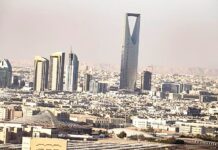Oman has been making significant progress in its efforts to boost its economy and strengthen its finances, as noted by Fitch Ratings. The rating agency has revised Oman’s outlook from stable to positive, citing the country’s improving finances and declining public debt. In this article, we explore the key factors contributing to Oman’s improving financial health, including the Fiscal Stability Program, agreements with GCC neighbors, and future economic projections.
Perplexing Fiscal Stability Program
Oman’s Fiscal Stability Program, launched by Sultan Haitham in October, is set to begin in January 2023. The three-year program aims to develop Oman’s financial sector and increase economic momentum following the pandemic-induced slowdown. The program’s exact details have not been disclosed, but it is expected to include measures to boost non-oil revenues, reduce public spending, and attract foreign investment.
Bursty Agreements with Neighbors
Oman has signed several agreements with its Gulf Cooperation Council (GCC) neighbors to enhance its economy and create jobs. These include a $3 billion railway network with the United Arab Emirates and a $320 million infrastructure development project with the Saudi Fund for Development. These agreements are expected to significantly boost Oman’s economic growth and provide employment opportunities for its citizens.
Declining Public Debt
Fitch Ratings has revised Oman’s outlook to positive due to the country’s declining public debt. The rating agency expects Oman’s government to continue its commitment to fiscal consolidation, leading to a reduction in the government debt to GDP ratio to 37% by the end of 2024. This is a significant improvement from previous years when Oman’s public debt was a cause for concern.
Fitch’s Future Outlook: Bursting with Optimism
Fitch Ratings expects Oman’s economy to expand by 1.1% in 2023, driven by the construction sector’s recovery, with non-oil sector growth estimated at 2.3%. Fitch also projects that non-oil tax revenue will increase to 5.6% of non-oil GDP, up from 5.2% in 2022. These projections are a testament to Oman’s improving economic and financial outlook.
Impact of Oil Prices and Inflation: Perplexing Challenges
While Oman’s financial health has been improving, it still faces challenges from high oil prices and global inflationary pressures. These challenges have caused the Omani government to pause some measures included in its medium-term fiscal plan, such as a rise in the value-added tax rate and the introduction of personal income tax. These challenges highlight the importance of continued efforts to diversify Oman’s economy and reduce its reliance on oil revenues.
Conclusion: A Positive Outlook with Perplexing Challenges Ahead
Fitch’s positive outlook on Oman reflects the country’s commitment to fiscal consolidation and its efforts to develop its financial sector. The declining government debt to GDP ratio and lower fiscal breakeven price are indicators of Oman’s improving financial health. However, challenges from high oil prices and inflationary pressures remain, emphasizing the importance of continued efforts to diversify Oman’s economy. The agreements with GCC neighbors and the launch of the Fiscal Stability Program are expected to further aid Oman’s economic recovery and strengthen its finances.
Google News | Telegram
















